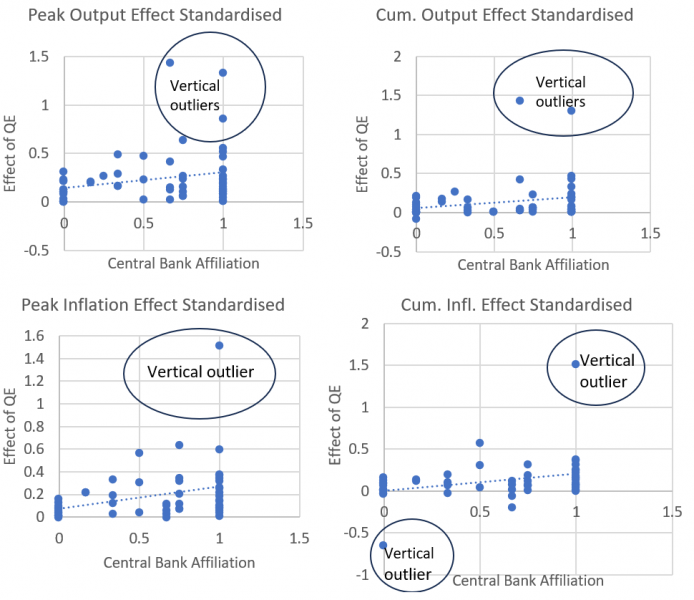References
Bertrand, M., E. Duflo, and S. Mullainathan (2004). “How much should we trust differences-in-differences estimates?”. Quarterly Journal of Economics. Vol. 119. Pp 249-275.
Edgeworth, F. (1887). “On observations relating to several quantities”. Hermathena. Vol 6. Pp 279-285.
Fabo, B., M. Jančokova, E. Kempf and L. Pástor (2021) “Fifty shades of QE: comparing findings of central bankers and academics”. Journal of Monetary Economics. Vol. 120. Pp. 1-20. https://doi.org/10.1016/j.jmoneco.2021.04.001.
Huber, P. (1964). “Robust estimation of a location parameter”. Annals of Mathematical Statistics. Vol. 35. Pp. 73-101.
https://www.jstor.org/stable/2238020.
Koenker, R. and G. Bassett. (1978). “Regression quantiles”. Econometrica. Vol 46. Pp. 33-50.
Maronna, R. and V. Yohai. (2000). “Robust regression with both continuous and categorical predictors” Journal of Statistical Planning and Inference. Vol. 89. Pp 197-214.
MacKinnon, J.G. and M.D. Webb (2017). “Pitfalls when estimating treatment effects with clustered data”. The Political Methodologist. Vol. 24. Pages 20-31.
Rousseeuw P and A. Leroy. (2003). Robust regression and outlier detection. Wiley. Hoboken.
Veradi, V. and C. Croux. (2009). “Robust regression in Stata”. Stata Journal. https://doi.org/10.1177/1536867X0900900306.
Weale M. and T. Wieladek. (2016). “What are the macroeconomic effects of asset purchases?”. Journal of Monetary Economics. Vol. 79. Pp. 81-93.
Wu, C. F. J.(1986). “Jackknife, bootstrap and other resampling methods in regression analysis”. Annals of Statistics. Vol. 14. Pp. 1261-1295.
Yohai, V. (1987). “High breakdown-point and high efficiency robust estimates for regression”. Annals of Mathematical Statistics. Vol. 15. Pp 642-656. https://www.jstor.org/stable/2241331.





